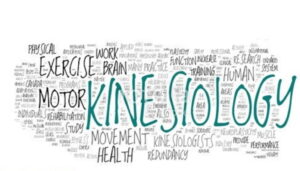Questions of Fundamentals of Kinesiology and Biomechanics in Sports MCQ XI.

| 1. | _______________ is the science that deals with organised system of information related to motion. a) Kinesiology b) Anatomy c) Biomechanics d) Physiology | |
| 2. | Which of the following statement is false in respect with Biomechanics . a) ‘Bio’ refers to living beings and ‘mechanics’ refers to the field of Physics in biomechanics. b) Biomechanics is the study of the body as a machine. c) It addresses physiological & psychological mechanics of movement d) It is the study of forces and their effects on living system. | |
| 3. | Which biological principle is based on the Newton`s third law of motion? a) Linear Motion b) Counter Action c) Angular motion d) Maximum Effort | |
| 4. | Which principle is involved in freestyle swimming & rowing a boat? a) Linear Motion b) Counter Action c) Angular motion d) Maximum Effort | |
| 5. | Which principle states that movement usually occurs in the direction opposite to that of the applied force? a) Linear Motion b) Counter Action c) Angular motion d) Maximum Effort | |
| 6. | Which Principles is involved in sumo wrestling? a) Maximum Velocity b) Maximum effort c) Spin d) Stability | |
| 7. | Extension and abduction come under_____________ movement a) Circumduction b) Gliding c) Angular d) Supination | |
| 8. | _____________ is the movement which takes place between the head of a bone and its articular cavity. a) Circumduction b) Gliding c) Angular d) Supination | |
| 9. | Which of the following is an example of Kinematics? a) Spinning a top b) force between then feet and the ground when jumping c) the grip force exerted by the hands to the grip d) throwing a ball in vertical motion | |
| 10. | Which movement is seen while turning the pages in a book? a) Circumduction b) Pronation c) Rotation d) Supination | |
| 11. | The movement in which the angle between the joint decreases is called _____________ a) Flexion b) Extension c) Abduction d) Adduction | |
| 12. | In which movement we lift the upper limb horizontally to form a right angle with the side of the body? a) Flexion b) Extension c) Abduction d) Adduction | |
| 13. | The movement in which we straighter the parts at a joint to increase the angle between them is _____ a) Flexion b) Extension c) Abduction d) Adduction | |
| 14. | Match the following A) Dosriflexion i) lowering a part B) Depression ii) turning the foot so the sole faces laterally C) Depression iii) Bending the foot ay the ankle toward the chin D) Eversion iv) turning the foot so the sole faces medially
a) A-iii, B-iv, C-ii, D-i b) A-iii, B-ii, C-i, D-iv c) A-iii, b-iv, c-i, d-ii d) A-iii, B-ii, C-iv, D-i
| |
| 15. | _____ axis passes straight through the top of the head down between feet. a) Sagittal b) Frontal c) Vertical d) None of these | |
| 16. | The _____ axis runs from the left to right through the centre of the body. a) Sagittal b) Frontal c) Vertical d) None of these | |
| 17. | _____ axis passes horizontally from posterior to anterior. a) Sagittal b) Frontal c) Vertical d) None of these | |
| 18. | Which plane includes spin or rotation to play a tennis shot? a) Medial b) Coronal c) Horizontal d) both a & c | |
| 19. | Assertion: Sports biomechanics is divided into the study of Kinetics and Kinematics Reason: There are some difference between Kinetics and Kinematics a) Both A and R are true and R is the correct explanation of A. b) Both A and R are true but R is not the correct explanation of A. c) A is true but R is false d) R is true but A is false | |
| 20. | Assertion: Biomechanics leads to improvement in sports performance. Reason: Biomechanics utilises mechanical principle to improve individual’s technique. a) Both A and R are true and R is the correct explanation of A. b) Both A and R are true but R is not the correct explanation of A. c) A is true but R is false d) R is true but A is false | |
| 21. | Assertion: Kinetics is also called dynamics. Reason: Kinematics is also called the geometry of motion. a) Both A and R are true and R is the correct explanation of A. b) Both A and R are true but R is not the correct explanation of A. c) A is true but R is false d) R is true but A is false | |
| 22. | Assertion: Kinesiology leads to unwanted movements, errors and fault of sports skill and techniques. Reason: The principles of Kinesiology helps in curing the various learning disabilities of a child. a) Both A and R are true and R is the correct explanation of A. b) Both A and R are true but R is not the correct explanation of A. c) A is true but R is false d) R is true but A is false | |
| 23. | Assertion: Kinesiology leads to unwanted movements, errors and fault of sports skill and techniques. Reason: The principles of Kinesiology helps in curing the various learning disabilities of a child. a) Both A and R are true and R is the correct explanation of A. b) Both A and R are true but R is not the correct explanation of A. c) A is true but R is false d) R is true but A is false |
